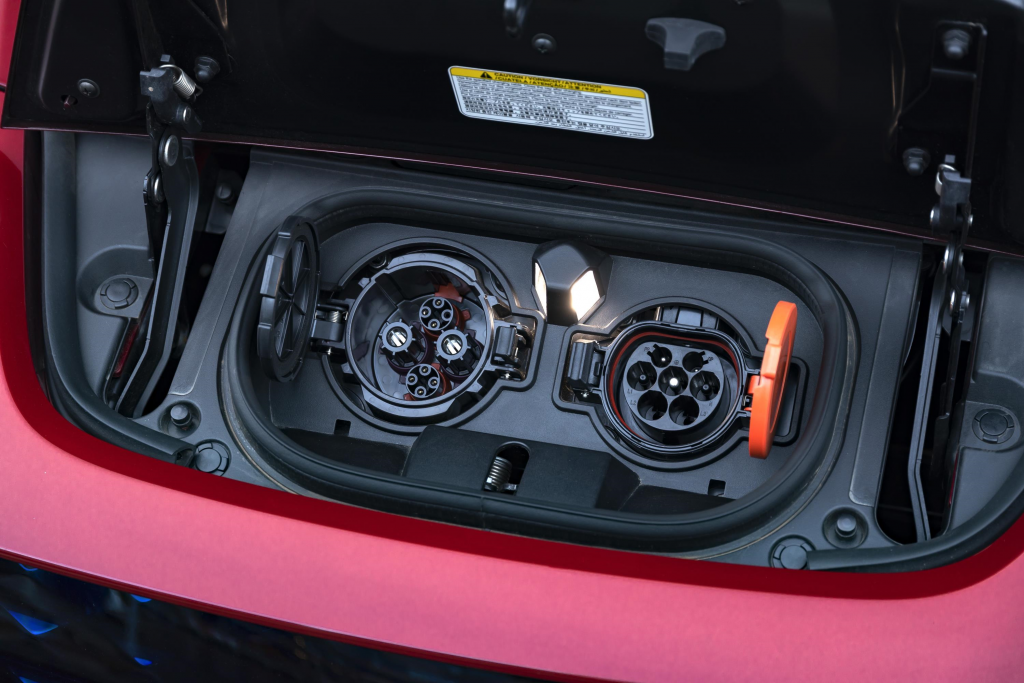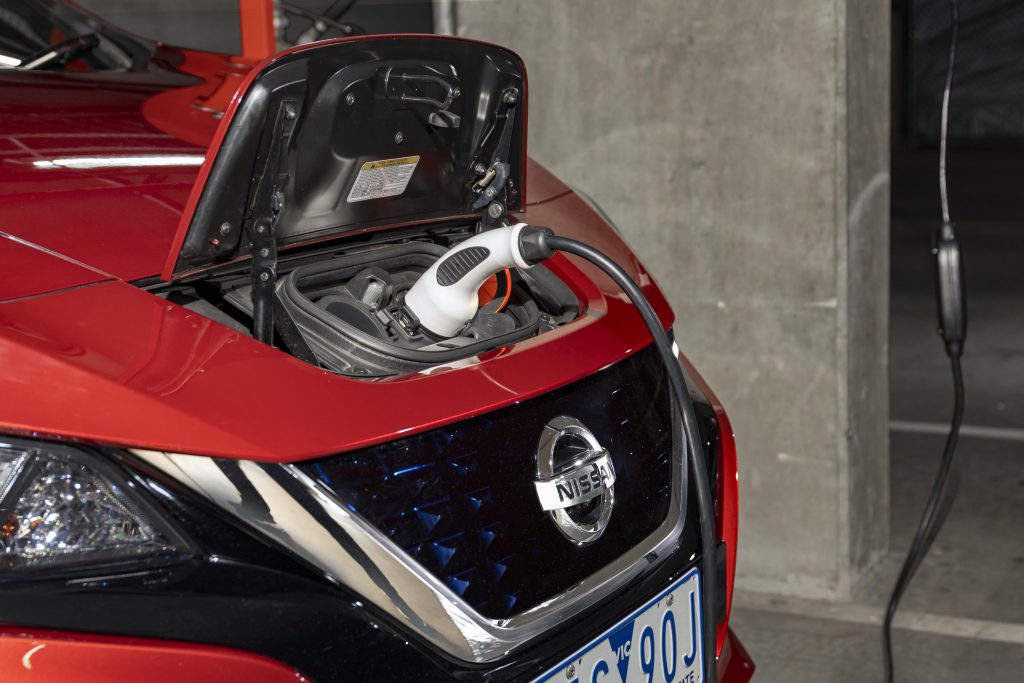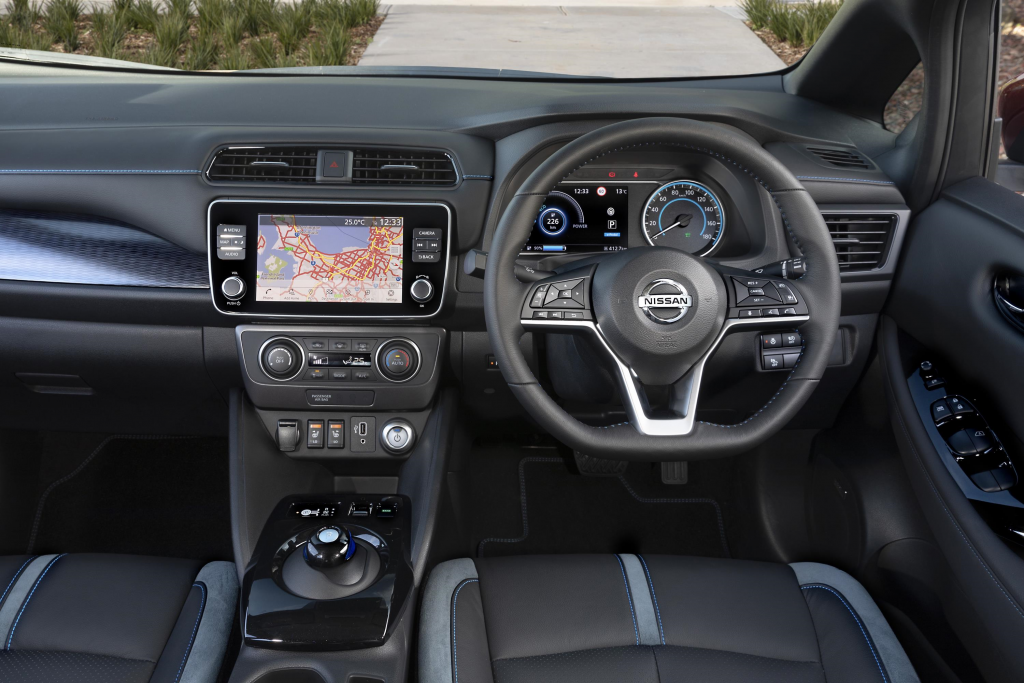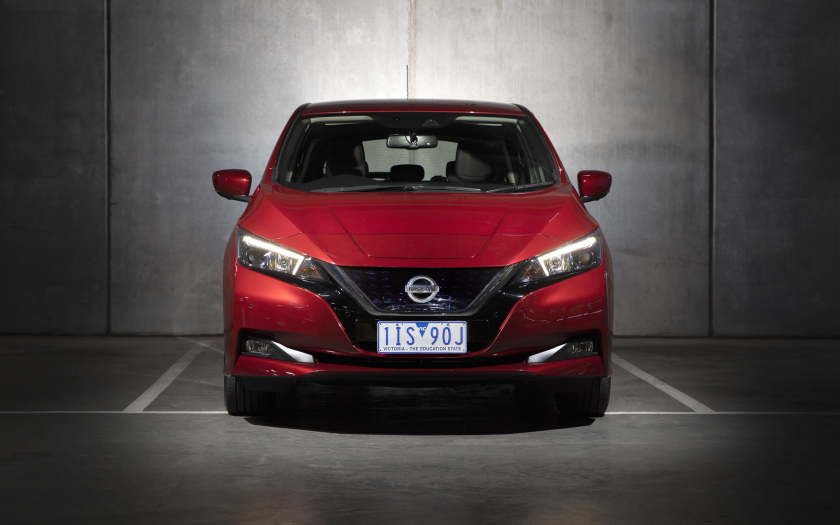IAN CRAWFORD attended the glitzy (and very premature) relaunch in Sydney. Here’s what he learned.
NISSAN HAS STAGED a mega presentation at Sydney’s historical Carriageworks complex to preview its next-generation Leaf electric car.
The nation’s motoring media were ushered into a specially built temporary theatre-style venue inside one of the huge former railway workshop buildings to see the new vehicle and watch various presentations about the car, how sales of electric vehicles are expected to increase, research findings into car-buyers’ intentions and how the cars will be charged.
The research found that 63 percent of respondents are more willing to consider an electric vehicle than they were five years ago.
It also found that 29 percent plan to buy an electric vehicle for their next car.
The new single-grade Leaf will not arrive in Australia till mid next year and Nissan gave no clues as to its pricing.

The original first-generation Leaf arrived in Australia in June 2012 and it was available until late 2016.
While the car sold around 360,000 units in 51 markets around the world, total Australian sales of just 635 did not exactly set the sales charts alight in this country.
Nissan claims that the 360,000 Leafs have travelled a total of 4.6 billion kilometres.
Developed under the banner of Nissan Intelligent Mobility, the new Leaf is a key part of the Japanese brand’s goal of electrifying a third of its model range in the mid-term.

While the first-generation Leaf was equipped with a 24kWh battery, the 2019 models will have 40kWh lithium-ion unit.
The old Leaf had 80kW of maximum power and 280Nm of peak torque. The new version will boast 110kW of power and 320Nm of peak torque that will give it a sprint time to 100km/h of 7.9 seconds.
Importantly, its beefier 350V battery means it will have a range of 270km – 100km more than its predecessor.
Nissan points out that the average Australian city-based driver does 38kms a day, meaning that buyers of the new Leaf will be able to drive for a whole week on a single charge.
Nissan has embarked on a dealer training program in readiness for the new car’s arrival and instead of having just 12 Leaf-capable dealers when the original Leaf arrived, there will be a total of 89 nationally for the 2019 model – 62 metropolitan and 27 provincial.

Buyers of the new Leaf can look forward to a generous standard-kit and safety inventory that will include such goodies as intelligent systems for driver alertness, around-view monitoring with moving-object detection, emergency braking with pedestrian detection, lane intervention and lane-departure warning.
To overcome the silent-running characteristics of the new Leaf, there will be a low-speed sound produced to warn pedestrians of the car’s approach.
Also standard will be an eight-inch touch-screen display a premium seven-speaker Bose audio system, satellite navigation, Bluetooth phone and audio connectivity, Apple CarPlay and Android smart-phone mirroring a flat-bottomed heated leather-wrapped steering wheel and black leather-accented seats with suede inserts.
While, naturally, the new Leaf will have a brake pedal, the car’s other pedal (it’s mounted where a conventional car’s accelerator sits) will allow the driver to accelerate and decelerate and hold the car on a hill.
Nissan claims that in fact, this pedal will manage up to 90 percent of the driving input.
The Leaf’s battery can be charged in three different ways.
The first, via a three-pin 15A 240 Mode 2 power point, takes 24 hours. The second – from a Mode 3 garage-wall box connection – takes around 7.5 hours from the time the empty warning kicks in to full.
Nissan claims this set-and-forget system can charge the Leaf overnight, much like people do with their mobile phone.
The third method uses a 50kWh CHAdeMo fast-charging point that in an hour can take the battery from the empty warning to 80 percent full.
While at the media launch we were able to sit in the car and inspect it closely, we could not drive it so that will have to wait till next year’s full-on launch.
